#Retinal Disorders
Explore tagged Tumblr posts
Text
youtube
Retinopathy Recovery: The Power of Stem Cell Therapy | Retinopathy |
https://www.globalstemcellcare.com/eye-disorder/stem-cell-treatment-for-retinopathy
#Retinopathy#Retinopathy Symptoms#Stem Cell Therapy#Vision Health#Retinopathy Treatment#Eye Disorders Treatment#Retinal Disorders#Diabetes And Vision#Vision Restoration#Diabetic Retinopathy#Retinal Health#Stem Cell Success#Stem Cells For Vision#Regenerative Medicine#Hope For Vision#Vision Loss Recovery#Vision Regeneration#Future Of Medicine#UK#USA#UAE#Switzerland#Indonesia#Africa#Singapore#Best Stem Cell Center In Delhi.#Diabetes#GSCC#Global Stam Cell Care#Youtube
0 notes
Text
If you're in Aurangabad and in need of exceptional eye care, Shri Krishna Netralaya is your go-to destination. Our team of experienced eye specialists offers comprehensive services to address various eye conditions. Trust us for personalized care and advanced treatments to enhance your vision and eye health.
#Eye specialist#ophthalmologist#eye care services#vision health#eye examinations#eye surgery#refractive surgery#cataract surgery#LASIK#glaucoma treatment#retinal disorders#corneal diseases#Aurangabad#Shri Krishna Netralaya
0 notes
Text
What Are The Major Factors Driving Retinal Biologics Market Growth?
The Retinal Biologics Market is experiencing a surge in demand, fueled by advancements in eye disease treatments and a growing emphasis on vision health. According to a recent analysis by Future Market Insights (FMI), a leading market research firm, the market is currently valued at an impressive US$22.25 billion in 2022. Looking ahead, the market is projected to witness a remarkable Compound Annual Growth Rate (CAGR) of 11.1% over the next six years. This translates to a staggering market valuation of US$41.92 billion by 2028, highlighting the significant potential of retinal biologics in revolutionizing eye care.The remarkable expansion of the Global Retinal Biologics sector is fueled by advancements in technology, innovative research, and a growing demand for cutting-edge treatments. As the industry continues to evolve, it presents unprecedented opportunities for stakeholders, investors, and healthcare professionals alike.Key Retinal Biologics Market Insights:
Rising Prevalence of Diabetes-related Eye Disorders and Age-related Macular Degeneration (AMD) The prevalence of diabetes-related eye disorders and age-related macular degeneration is on the rise, underscoring the growing need for innovative solutions within the Retinal Biologics Industry.Substantial Investment in R&D for Biologics in Retinal Disorders The industry is witnessing a significant influx of research and development resources, aimed at advancing biologics for both infectious and non-infectious retinal disorders. This investment underscores the commitment to addressing unmet medical needs.
Emergence of Specific Biologic Molecules as Therapeutic Targets Specific biologic molecules are gaining prominence as highly promising therapeutic targets, offering new hope for patients with retinal conditions.Gene Therapy as a Solution for Monogenic Retinal Illnesses With a growing number of monogenic retinal illnesses, gene therapy is emerging as a pivotal component of the Retinal Biologics Market, presenting innovative solutions for these challenging conditions.
Request a Sample Copy of This Report Now.https://www.futuremarketinsights.com/reports/sample/rep-gb-8663
#The Retinal Biologics Market is experiencing a surge in demand#fueled by advancements in eye disease treatments and a growing emphasis on vision health. According to a recent analysis by Future Market I#a leading market research firm#the market is currently valued at an impressive US$22.25 billion in 2022. Looking ahead#the market is projected to witness a remarkable Compound Annual Growth Rate (CAGR) of 11.1% over the next six years. This translates to a s#highlighting the significant potential of retinal biologics in revolutionizing eye care.The remarkable expansion of the Global Retinal Biol#innovative research#and a growing demand for cutting-edge treatments. As the industry continues to evolve#it presents unprecedented opportunities for stakeholders#investors#and healthcare professionals alike.Key Retinal Biologics Market Insights:Rising Prevalence of Diabetes-related Eye Disorders and Age-relate#underscoring the growing need for innovative solutions within the Retinal Biologics Industry.Substantial Investment in R&D for Biologics in#aimed at advancing biologics for both infectious and non-infectious retinal disorders. This investment underscores the commitment to addres#offering new hope for patients with retinal conditions.Gene Therapy as a Solution for Monogenic Retinal Illnesses With a growing number of#gene therapy is emerging as a pivotal component of the Retinal Biologics Market#presenting innovative solutions for these challenging conditions.Request a Sample Copy of This Report Now.https://www.futuremarketinsights.#institutional sales in the Retinal Biologics Industry#where Retinal Biologics are supplied in speciality clinics and hospitals#will generate higher revenues. In 2018#hospital sales accounted for more than 35% of market revenue.According to the report#retail sales of Retinal Biologics will generate comparable revenues to hospital sales and will expand at an 11.9% annual rate in 2019. Reta#with retail pharmacies generating more money than their counterparts in the future years.Penetration in North America Higher#APEJ’s Attractiveness to IncreaseNorth America continues to be the market leader in Retinal Biologics revenue. According to FMI estimates#North America accounted for more than 46% of global Retinal Biologics Industry revenues in 2018. Revenues in North America are predicted to#continuous growth in the healthcare infrastructure#and a favourable reimbursement scenario.Europe accounted for about one-fourth of the Retinal Biologics market#with Western European countries such as Germany#the United Kingdom#France#Italy
2 notes
·
View notes
Text
Expert Eye Disease Treatment Options to Improve Vision
William Mayo once said, “The aim of medicine is to prevent disease and prolong life, the ideal of medicine is to eliminate the need of a physician.” This quote is very relevant to eye disease treatment. Early detection and treatment can greatly improve vision and life quality. The World Health Organization reports that over 2.2 billion people worldwide have vision impairment or blindness1. Eye…
#Cataract Surgery#Cornea Disorders#Eye Care Specialists#Eye health#Glaucoma Treatment#Macular Degeneration#Ophthalmology#Retinal Diseases#Vision Improvement
0 notes
Text

Discover Everything About Intravitreal Injections!
Are you or a loved one dealing with eye conditions requiring advanced treatment? Learn about Intravitreal Injections—a highly effective method to manage retinal disorders.
📌 What is Intravitreal Injection? Intravitreal injection is a precise medical procedure where medications are directly delivered into the vitreous gel of the eye, treating conditions like macular degeneration, diabetic retinopathy, and more.
📌 How is Intravitreal Injection Performed? The procedure is quick and virtually painless, performed in a sterile environment. A numbing drop is applied to the eye before the injection, ensuring maximum comfort.
📌 Possible Risks or Complications While generally safe, some patients may experience temporary redness, irritation, or mild discomfort. Severe complications, though rare, include infection or increased eye pressure.
📌 What to Expect After the Injection Mild blurriness or irritation is common but temporary. Follow post-procedure care to ensure a speedy recovery and keep your follow-up appointments.
Click here to learn more and take charge of your eye health today! 🌟
0 notes
Note
I probably have hEDS, have had tense muscles since I was 8 and more and more of my joints started to be in constant pain, 10 years spine, 14 years hips, then hands at 19 and now all of them. And though I'm over 40 and don't practice any stretching, I still can contort myself in any direction.
But I don't know if it's worth the energy to fight for a diagnosis? Because it doesn't seem like there is any help, other than mild painkillers and physiotherapy, and I already get that. It is so much work to convince doctors to look into the source of joint pain, as soon as they can rule out rheumatoid arthritis they stop caring. And I don't belive I will get stronger painkillers even with a diagnosis anyway.
Do you think a diagnosis is woth the hassel?
For me, diagnosis was worth it because it meant getting the correct kind of physical therapy, which is often very different from the regular kind you usually get if the physical therapist is good at their job.
Regular PT used to damage my joints more. PT designed to target hypermobility has actually helped build joint stability, retrain my muscles, and reduce some of my pain by lessening the frequency of injuries.
It’s also good to know because hEDS affects more than just your joints.
I have a lot of problems with my internal organs due to how my connective tissue is affected, and my brother, who is undiagnosed but likely affected, suffered from spontaneous retina detachment twice. When I mentioned it to my eye doctor he said, “yeah, that happens to you zebras” and now I get my retinal health assessed every six months because fuck that.
It can also be good to know because of how it affects your care during things like surgery, ranging from which anesthesia they use to the type of sutures required.
When my mother had a mastectomy, she experienced several surgical complications, including not being able to get the wound site to close, so they kept dragging her back into surgery.
When I found out, I told my dad the surgical team needed to know my mother likely had hEDS because I did, and my mother and I are carbon copies of each other. When my dad told the surgeon, he apparently said, “Well, if I’d known that, I’d have done the whole thing differently!” and finally got my mother stitched up properly and into recovery.
In that regard, my diagnosis helped not just me but a family member, but also indicated the type of care I’ll likely need if I’m ever in the same situation.
So, yes, it's a hassle to get diagnosed and some (bad) doctors will frame it in terms of “there’s no cure so there’s no point.”
But for me, it’s not only been worth it but also vital to the management of the rest of my care. And let me be clear, there are some people for whom this is just a crappy joint disorder, and they are otherwise fine. But for many of us, we’re more than just our fucky joints. We’re an entire plethora of health problems that all cascade from our weak connective tissue, and it's important more people recognize that.
So is it worth it for you? That's a you decision. But it was very much worth it for me.
I wish you luck and fewer days of pain. This shit sucks.
429 notes
·
View notes
Note
https://www.tumblr.com/olderthannetfic/768016900207869952/discussions-about-terminating-pregnancies-if-the?source=share
responding to this because i have thoughts.
i've got a rare genetic disorder. it's autosomal dominant, meaning it'd be a fifty-fifty shot if i'd give my biological offspring my disorder. it's not a fatal disorder, my form. it could be mild for them (like my dad, who almost certainly has it, no diagnosis but he undoubtably meets criteria and where else would i have gotten it). probably it wouldn't even make them need significant aids to get through day to day life.
and yet, i don't want bio kids in large part because of it. maybe i'd have them if there was a known genetic marker that i could do prenatal testing for (my type is the one type of this disorder that doesn't have a known genetic marker; it's a diagnosis of exclusion). but right now? hell no.
why would i knowingly give my kid pain and suffering? even at the milder end, it's got downsides (my dad doesn't have constant pain but he had two spontaneous pneumothoraxes a month apart from each other). it increases the risk of conditions as varied as GERD, mitral valve prolapse, POTS, and retinal detachment. it gives you visible signs like weird scars. it almost certainly gives you pain anywhere there's a joint or muscle and elsewhere also. just a few weeks ago i dislocated my shoulder from wearing a backpack!
who wouldn't want to prevent their kid from experiencing that?
i'm autistic, also. does the idea of someone terminating a pregnancy because their kid could be autistic like me make me uncomfortable? of course. but it's also not that simple. some autistic people need much higher levels of care than some parents are able to provide. in a perfect world every parent would be able to care for their disabled kid.
we don't live in a perfect world.
i support a woman's right to choose in all instances. even if i think her reason is silly. even if i think her reason is ableist! it's not up to me! it shouldn't be up to me!
i will say though i do not like the idea of there being prenatal testing for autism. rubs me the wrong way. but that's a complicated issue and maybe i'm too close to it to think fairly about it, and it's a moot point because we don't have that technology yet.
--
62 notes
·
View notes
Text




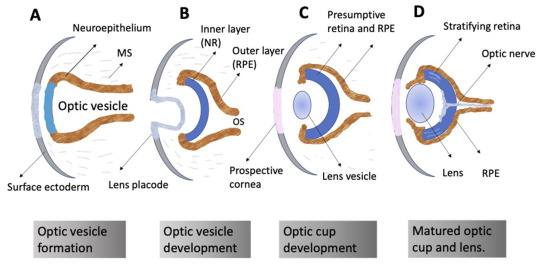

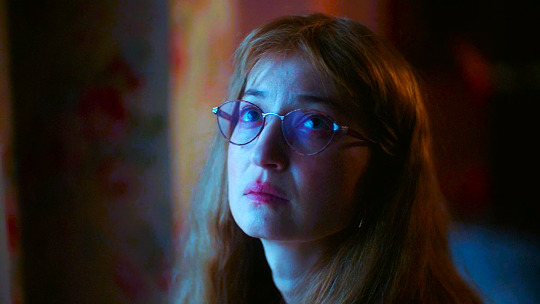
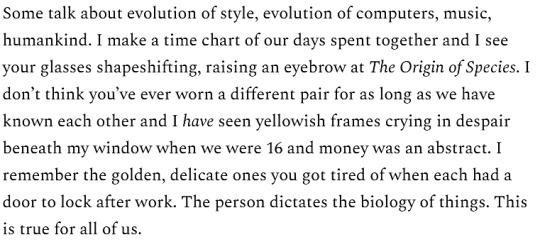
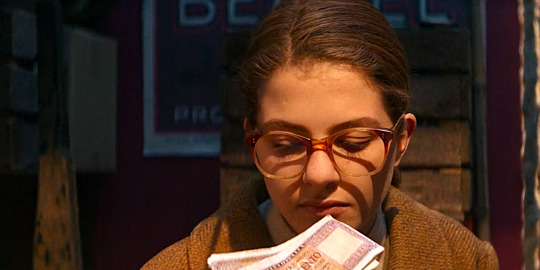
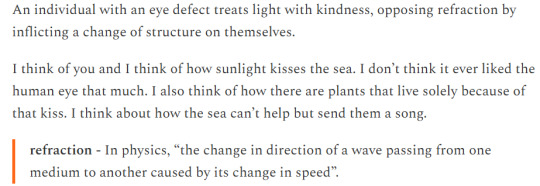





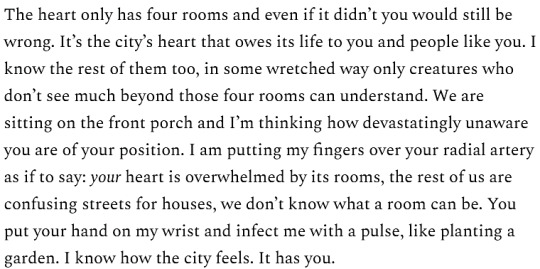

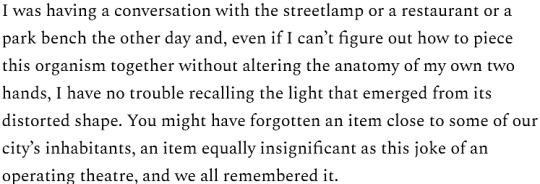
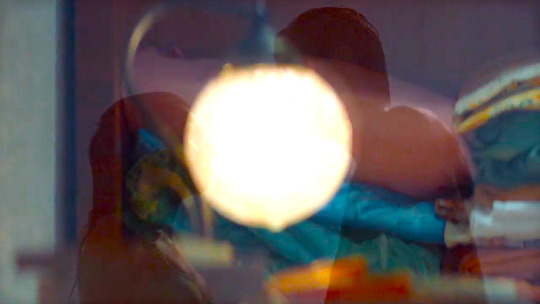


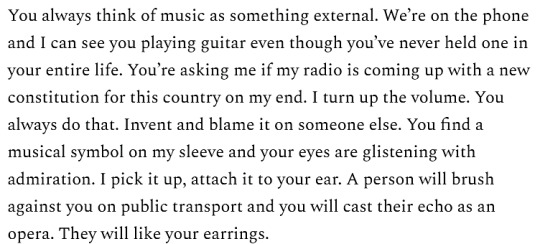
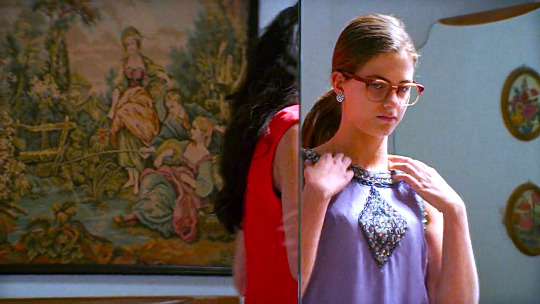
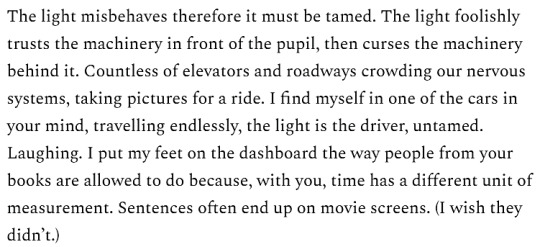






changing the physiology of the universe // love letter to the girl who writes (for @elenagrec)
Self-Organization of the Retina during Eye Development, Retinal Regeneration In Vivo, and in Retinal 3D Organoids In Vitro // My Brilliant Friend TV // L'amica geniale, Elena Ferrante // text by me (brought to you by my unimaginable desire to accent Lila's perception of Elena, who often takes her ability to add magical components to an otherwise unpleasant and meaningless reality for granted)
Everything is connected in L'amica geniale because Elena makes it so. She is the one who offers the symbolism we all see to everything these characters do. She is the only one who sees the metaphorical kingdom behind the disgusting and the banal and the violent. She finds wounds in time and turns on a flashlight and suddenly the blood spilling out of it is a different, more vivid colour. Lila is right to recognize the underlying disorder behind artificial structures humans build to feel more comfortable and Elena engages in the same architectural work of creating boundaries where there aren't any, but she does it so differently from everyone else and that is why Lila loves her. The way Elena does this exists in direct contrast to the false safety most of the other characters are dependent on because the material Elena uses to create her shapes is love stored in attention. It doesn't matter that Nino Sarratore wasn't actually beautiful. It matters that Elena saw him as such. It doesn't matter how Lila Cerullo actually was like. What matters is that Elena Greco loved her. Love is the sole instrument that can shape things in a convincing and tenacious way.
#l'amica geniale#my brilliant friend#elena ferrante#elena greco 📝#lila cerullo 🫀#2 in 1: little dot with the flames round it#ferranteposting#dylanlila.mp3#mbf + science#mbf + my writing
26 notes
·
View notes
Text
In wake of my Modern AU Angbang, I thought I’d go ahead and share what my personal modern AU Mairon is like.
Is thirty-two but doesn’t look a day past twenty and he’s super proud of that
Was once an incredibly renowned jewelry designer in the high fashion industry until his eyesight began to deteriorate
Mairon is legally blind (this was me wanting to insert a tiny nod to the Eye)
Being legally blind isn’t the same as being blind; Mairon can still see, he just 20/200 vision, which means he can only see clearly about twenty feet in front of him
There wasn’t an any type of accident; Mairon has a rare genetic disorder called Retinitis Pigmentosa, causing severe vision loss beginning around age twenty-five
Mairon has a lot of internalized ableism but being with Melkor, who is also disabled, helps him come into his own about being comfortable with his disability
Mairon left home at a young age, determined to make himself known outside of a home where he had many siblings and was very much neglected due to being a “complicated” child
He has high taste and very often uses it to decorate his home or even make intricate sweaters for his dogs (knitting is a fun hobby for him)
Speaking of dogs, Mairon has three giant huskies. Their names are Draugluin, Thuri, and Minnie, who serves as his mobility aid
He really wants to be able to make jewelry professionally again, though he tries to hide it
Actually really good at playing the piano (this was how he met Melkor)
A great cook, loves to experiment, much to Melkor’s dismay (he’s just a baby that doesn’t want to try new things)
#the silmarillion#angbang#mairon#modern au#headcanon#i definitely have more but these were on my mind at the very moment
37 notes
·
View notes
Text


Liberalism is a mental disorder. And it’s in free fall after being continually lied to by the commie Dems and willing media. Of course these people are so self loathing they willingly go along with it.
The above craze will make the major headlines in the next few days/weeks replacing the 4B movement. The common thread being ugly people (physically and mentally) saying they’re withholding sex/pregnancy because…orange man bad. The truth being no one wants these people to begin with.
Women (hOw dArE yOu aSsUmE mY gEnDeR) are getting sterilized…getting their fallopian tubes clipped…to ensure their reproductive rights…let that statement sink in for a minute.
There are so many eye rolling quotes in that article I think I gave myself a retinal detachment.
This is the equivalent of the gene pool trash taking itself out.
24 notes
·
View notes
Text
finally managed to get to an eye doctor out-of-pocket to get an eye exam and good news/bad news!
good news: i don't have BVD (binocular vision disorder) and Zenni now carries prescription lens of my strength
bad news: my prescription went from -11.75 to -13.00 in my right eye (the left remained unchanged, but i can't read out of it b/c it went through a retinal detachment)
so yes my vision is so much worse, but i was just able to buy glasses for $94 instead of the $800 my current pair cost
so you know! silver lining!
#original#my rambles#i am going to go blind one day yall but you know what#at least now i know what i've been struggling with writing and looking at my screens#it's becasue my vision is SO MUCH WORSE#bright side i got lenses that are meant to help with that#they're rose tinted#will literally be seeing the world through rose colored glasses
9 notes
·
View notes
Text
youtube
Retinopathy Symptoms You Need to Know & the Role of Stem Cell Treatment |
https://www.globalstemcellcare.com/eye-disorder/stem-cell-treatment-for-retinopathy
#Retinopathy#Retinopathy Symptoms#Stem Cell Therapy#Vision Health#Retinopathy Treatment#Eye Disorders Treatment#Retinal Disorders#Diabetes And Vision#Vision Restoration#Diabetic Retinopathy#Retinal Health#Stem Cell Success#Stem Cells For Vision#Regenerative Medicine#Hope For Vision#Vision Loss Recovery#Vision Regeneration#Future Of Medicine#UK#USA#UAE#Switzerland#Indonesia#Africa#Singapore#Best Stem Cell Center In Delhi.#Diabetes#GSCC#Global Stam Cell Care#Youtube
0 notes
Text

Astronauts' eyes weaken during long space missions, raising concerns for Mars travel
The low levels of gravity (microgravity) in space cause significant changes in astronauts' eyes and vision after six to 12 months aboard the International Space Station (ISS), according to a study published in the IEEE Open Journal of Engineering in Medicine and Biology.
Université de Montréal ophthalmologist Santiago Costantino found that at least 70% of astronauts on the ISS have been affected by spaceflight-associated neuro-ocular syndrome, or SANS.
In the biophotonics research unit he runs at the UdeM-affiliated Maisonneuve-Rosemont Hospital, Costantino assembled a group of researchers to identify the biomechanical changes responsible for this disorder.
They analyzed data collected by the Canadian team at NASA on 13 astronauts who spent between 157 and 186 days on the ISS.
The subjects had an average age of 48 and came from the U.S., European, Japanese and Canadian space agencies; 31% were women; eight were on their first mission.
Three parameters involved
The researchers compared three ocular parameters before and after the astronauts' space missions: ocular rigidity, intraocular pressure, and ocular pulse amplitude.
They measured ocular rigidity using optical coherence tomography with a customized video module to improve the quality of images of the choroid. The other two parameters, intraocular pressure and ocular pulse amplitude, were measured using tonometry.
The study found significant changes in the biomechanical properties of the astronauts' eyes: a 33% decrease in ocular rigidity, an 11% decrease in intraocular pressure, and a 25% reduction in ocular pulse amplitude.
These changes were accompanied by symptoms including reduced eye size, altered focal field and, in some cases, optic nerve edema and retinal folds.
The researchers also found that five astronauts had a choroidal thickness greater than 400 micrometers, which was not correlated with age, gender or previous space experience.
"Weightlessness alters the distribution of blood in the body, increasing blood flow to the head and slowing venous circulation in the eye," explained Costantino. "This is probably what causes the expansion of the choroid, the vascular layer that nourishes the retina."
Long-lasting changes
According to the researchers, the expansion of the choroid during weightlessness could stretch the collagen in the sclera, the white outer layer of the eye, causing long-lasting changes in the eye's mechanical properties.
They also believe that blood pulsations under microgravity can create a water-hammer effect in which sudden changes in blood-flow-pressure cause a mechanical shock to the eye, leading to significant tissue remodeling.
Eyes return to normal
According to the researchers, these ocular changes are generally not cause for concern when the space mission lasts six to 12 months. Although 80% of the astronauts they studied developed at least one symptom, their eyes returned to normal once back on Earth.
In most cases, wearing corrective eyeglasses was sufficient to correct the symptoms developed aboard the ISS.
However, the research community and international space agencies are cautious about the consequences of longer missions, such as a flight to Mars. The eye-health effects of prolonged exposure to microgravity remain unknown, and no preventive or palliative measures now exist.
The Maisonneuve-Rosemont research team is waiting for more data from NASA to continue its investigations.
"The observed changes in the mechanical properties of the eye could serve as biomarkers to predict the development of SANS (spaceflight-associated neuro-ocular syndrome)," said Costantino.
"This would help identify at-risk astronauts before they develop serious eye problems during long-duration missions."
4 notes
·
View notes
Text
Mechs Disability Headcanons
[plain text: mechs disability head canons]
[a lot of these are taken from conversations with my friend @carmillatism, so please go check mech out!]
-> Drumbot Brian:
[plain text: arrow drumbot brian]
disabilities and disorders: autism, adhd, ocd, pots, cfs, fibro, hEDS, short sightedness, tinnitus, gad, ocpd, ppd, stpd, bpd, dpd, dpdr
aids: service animal (teddy), cane, rollator, crutches, compression socks, stim toys/chewellery, anti-depressants, port
extra: fluent in BSL, faints very frequently, is very easy going on his body (probably the most out of all the mechs), takes care of others when they’re going through flare ups or meltdowns or other, both because he knows what to do more than others and because he likes taking care of people, does need help from others sometimes and has some anxiety surrounding that
-> Jonny d'Ville:
[plain text: arrow jonny d’ville]
disabilities and disorders: autism, adhd, ptsd, otosclerosis, scoliosis, arrhythmia, scad, costochondritis, fibro, nut allergies, npd, bpd, amputee, dermatillomania, pots, hpd, aspd, stpd, ppd, dpd
aids: service animal (beelzebub), cane, crutches, wheelchair, compression socks, stim toys/chewellery, epipen, hearing aid, g tube, AAC device, prosthetic left leg (from knee)
extra: stims with his guns safety a lot, is a carnivore and gets very sick/has flare ups when eating something that is not meat (can eat raw meat) but needs other nutrients through his g tube, can fingerspell in BSL
-> Ashes o'Reilly:
[plain text: arrow ashes o’reilly]
disabilities and disorders: autism, adhd, asthma, costochondritis, cfs, fibro, dpdr, bpd, npd, hpd
aids: service animal (cerberus), crutches, wheelchair, nasal cannula, inhaler
extra: has a lot of asthma attacks due to smoking but doesn't stop, service animal is cerberus from udad, fluent in BSL
-> Gunpowder Tim:
[plain text: arrow gunpowder tim]
disabilities and disorders: autism, adhd, psychosis, monochromacy colourblindness, retinitis pigmentosa, cfs, fibro, bpd, hpd, npd, ppd
aids: guide/service animal (gunner), white cane, stim toys, anti-psychotics, communication/pec cards
extra: usually has a hard time being the gunner but loves just shooting at things, even if he cant completely see what hes aiming for, the aurora has braille everywhere for her to read when her eyes are particularly bad, fluent in BSL for good days when other mechs need to communicate with BSL
-> Raphaella la Cognizi:
[plain text: arrow raphaella la cognizi]
disabilities and disorders: autism, ocd, lupus, cfs, crohns, fibro, hEDS, bpd, npd, hpd, ocd, stpd
aids: service animal (carbon monoxide), g tube, cane, wheelchair, picc line, port, stim toys
extra: she gets very upset at not being able to do science on days where she can't do anything but will list her symptoms and experience to turn it into a small experiment, stims by pouring liquid between vials, spin is science (shes so carlos for that), fluent in BSL
-> Marius von Raum:
[plain text: arrow Marius von raum]
disabilities and disorders: autism, adhd, cfs, hEDS, muscular dystrophy, otosclerosis, pots, bpd, stpd
aids: service animal (gizmo), electric wheelchair, crutches, port, stim toys, hearing aid, compression socks, AAC device
extra: fluent in BSL, is the most likely to cause flare ups by overworking his body (hes just silly okay)
-> Ivy Alexandria:
[plain text: arrow Ivy Alexandria]
disabilities and disorders: autism, ocd, neuropathic pots, otosclerosis, cfs, fibro, epilepsy, tourettes, ocpd, ppd, bpd, spd
aids: service animal (daisy), cane, rollator, crutches, hearing aids, stim toys/chewellery, communication/pec cards, AAC device
extra: fluent in BSL, spin is books and languages, is nonverbal more often than not
-> Nastya Rasptina:
[plain text: arrow Nastya Rasputina]
disabilities and disorders: autism, hypovolemic pots, vEDS, hEDS, chronic venous insufficiency, raynauds syndrome, vasculitis, bpd, avpd, ppd, spd
aids: electric wheelchair, rollator, cane, ng tube, port, compression socks
extra: just stays up in the vents and talks with aurora on really bad days, body cant take solids most of the time, fluent in BSL, RSL and DGS
-> The Toy Soldier:
[plain text: arrow the toy soldier]
extra: is not real, so does not have any disabilities, but does use a cane to help stay upright, also is fluent in BSL, also uses communication/pec cards
#bear growls#this is for my fic so i can remember things since i have really bad brain fog!#i am going to show all of the mechs disabilities in all my mechs fics#and the one i am working on now#though mainly brians because its brian study#the mechs#the mechanisms#disabled#disability#disability pride month#long post#disabled headcanon
61 notes
·
View notes
Text
SIX THE MUSICAL - MODERN!AU: illustration








Jane's family tree 2/2
(The Seymour family has Leber Congenital Amaurosis (LCA), an Inherited Retinal Disorder (IRD). It's a family of congenital retinal dystrophies that results in severe vision loss at an early age. Patients usually present with nystagmus, sluggish or near-absent pupillary responses, severely decreased visual acuity, photophobia, and high hyperopia. It is the most severe retinal dystrophy causing blindness by the age of 1 year in most cases. The white pupil represents who inherited the disorder)
#Edward Benjamin Seymour#Henry Lucas Seymour#Jane Lilian Seymour#Elizabeth Emily Seymour#John Edward Seymour#Anne Catherine Seymour#Margaret Jane Seymour#Anne Stanhope#Mary Diana Stanhope-Seymour#Thomas Dante Stanhope-Seymour#thomas Harris Seymour#Catherine Filliol#Barbara Wolfe#Aaron Adam Seymour#Veronica Jane Seymour#Catherine Taís Guerra-Parr#Mary Phillipa Parr#Henry Tudor VIII#Edward Pollux Seymour-Tudor#Anna von der Kleve-Berg#Anthony Ughtred#Henry Jonah Ughtred#Margery Dinah Ughtred#John Alexander Paulet#Henry Thadeus Paulet#Edward Jackson Paulet#Frances Kourtney Paulet#jane seymour#catherine parr#six
8 notes
·
View notes
Text
Speaking about his personal history with the BBC in June 2021, Petrillo said: “Until four years ago, if you’d talked to Fabrizio (the name Petrillo was given at birth), Fabrizio would have given you the idea he was sexist. He was a tough guy who’d speak dismissively of women and then be a woman in his private space.”
Another misogynist who couldn't succeed against other men.
By Genevieve Gluck August 13, 2024
A 50 year-old trans-identified male from Italy is set to become the first man to compete in a women’s category at the Paris Paralympics. Valentina Petrillo, whose birth name is Fabrizio, who competes in the women’s T12 classification, for athletes with visual impairments, and currently holds 8 women’s running championship titles, despite failing to earn even one while competing as a male.
Petrillo has been diagnosed with Stargardt disease, a disorder of the eye that causes retinal degeneration over time. Due to this visual impairment, he has been permitted to compete in both matches designated for women with disabilities, as well as those which are not.
At the Paralympic Games, which are scheduled to run from August 28 to September 8, Petrillo will run in the women’s T12 200m and 400m. He was cleared to compete against female athletes, despite being a man, by International Paralympic Committee (IPC) President Andrew Parsons. The IPC works closely with the International Olympic Committee (IOC), and the two have self-described as “strategic partners.”
Speaking to BBC Sport, Parsons revealed that the IPC does not enforce an official position for or against allowing men to self-identify into women’s sport, but rather “[allow] individual sports to make their rules in terms of transgender,” which results in rules that are “different from sport to sport.”
“Some are coming with different positions on transgender, or with the criteria to allow them or not to allow them, so I’m not surprised by the repercussions of it,” Parsons said. He added that he hoped the sporting community would “unite” on policies dealing with gender identity.
According to the World Para Athletics Championships guidance on participation, “an athlete shall be eligible to compete in women’s competition if she is recognized as female by law.” But their policy book goes on to note that it will “deal with any cases involving transgender athletes in accordance with the IOC’s transgender guidelines.”
Petrillo first changed his name to Valentina and began taking estrogen in 2019. The following year, he began competing against female athletes and has since broken multiple Italian women’s running records.
Speaking about his personal history with the BBC in June 2021, Petrillo said: “Until four years ago, if you’d talked to Fabrizio (the name Petrillo was given at birth), Fabrizio would have given you the idea he was sexist. He was a tough guy who’d speak dismissively of women and then be a woman in his private space.”
Mariuccia Quilleri, an athlete and lawyer who has represented several female athletes who oppose Petrillo’s participation in women’s races, told the BBC that inclusion had been chosen over fairness and “there is not much more we can do.”
See rest of article
#2024 paralympics#Valentina Petrillo is Fabrizio Petrillo#he holds 8 women’s running championship titles#He didn't ern one while he was competing against men#Women's sports is not a Plan B for mediocre male athletes#International Paralympic Committee (IPC)
7 notes
·
View notes